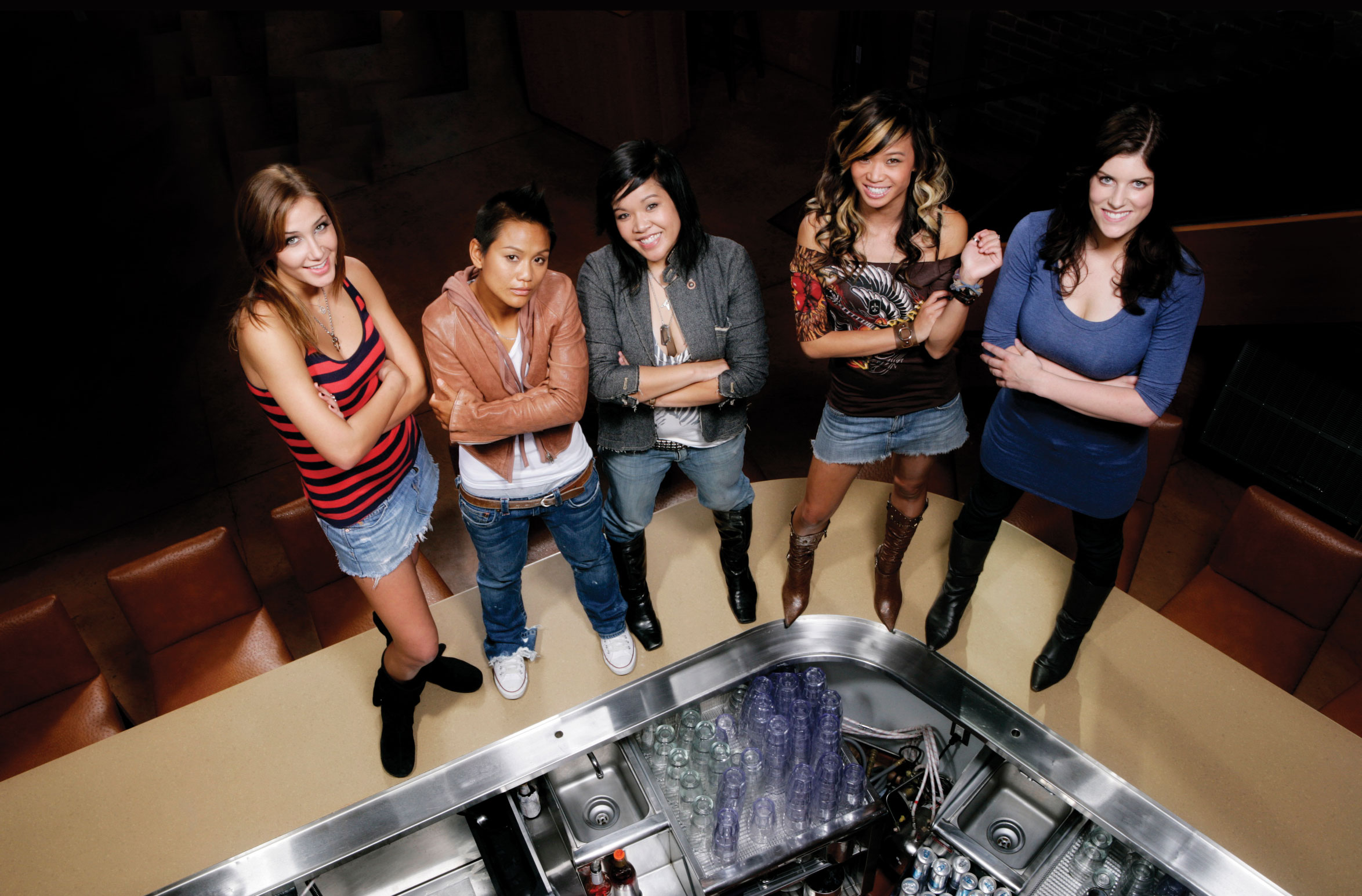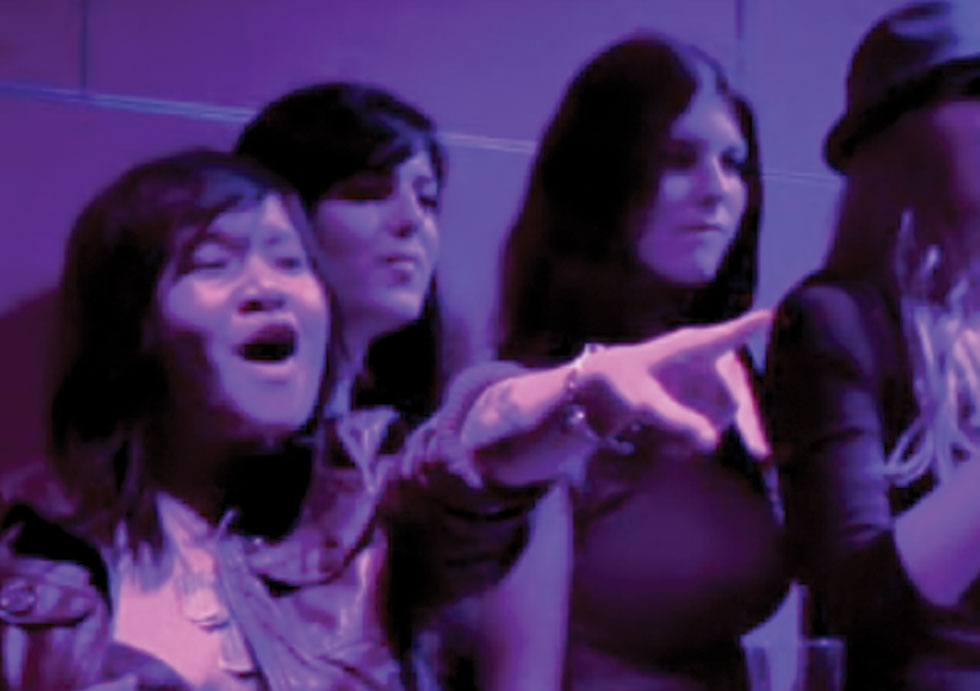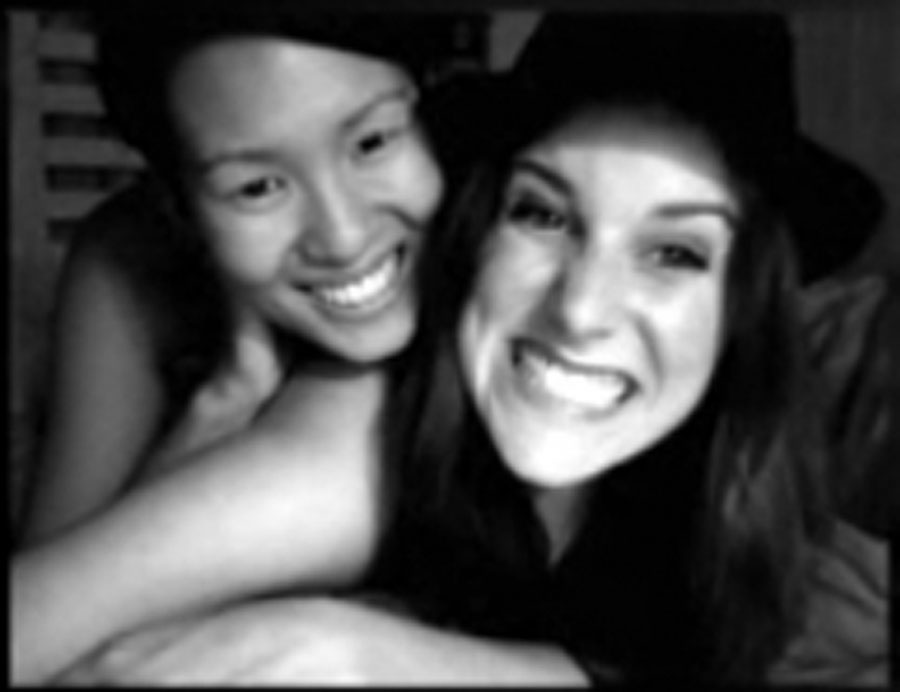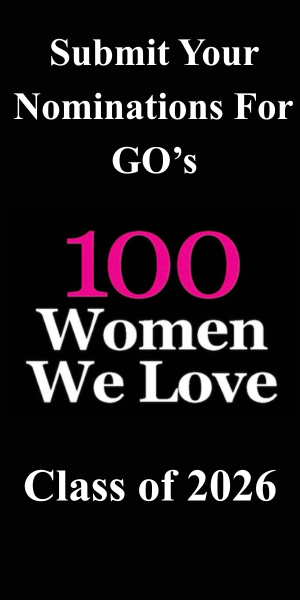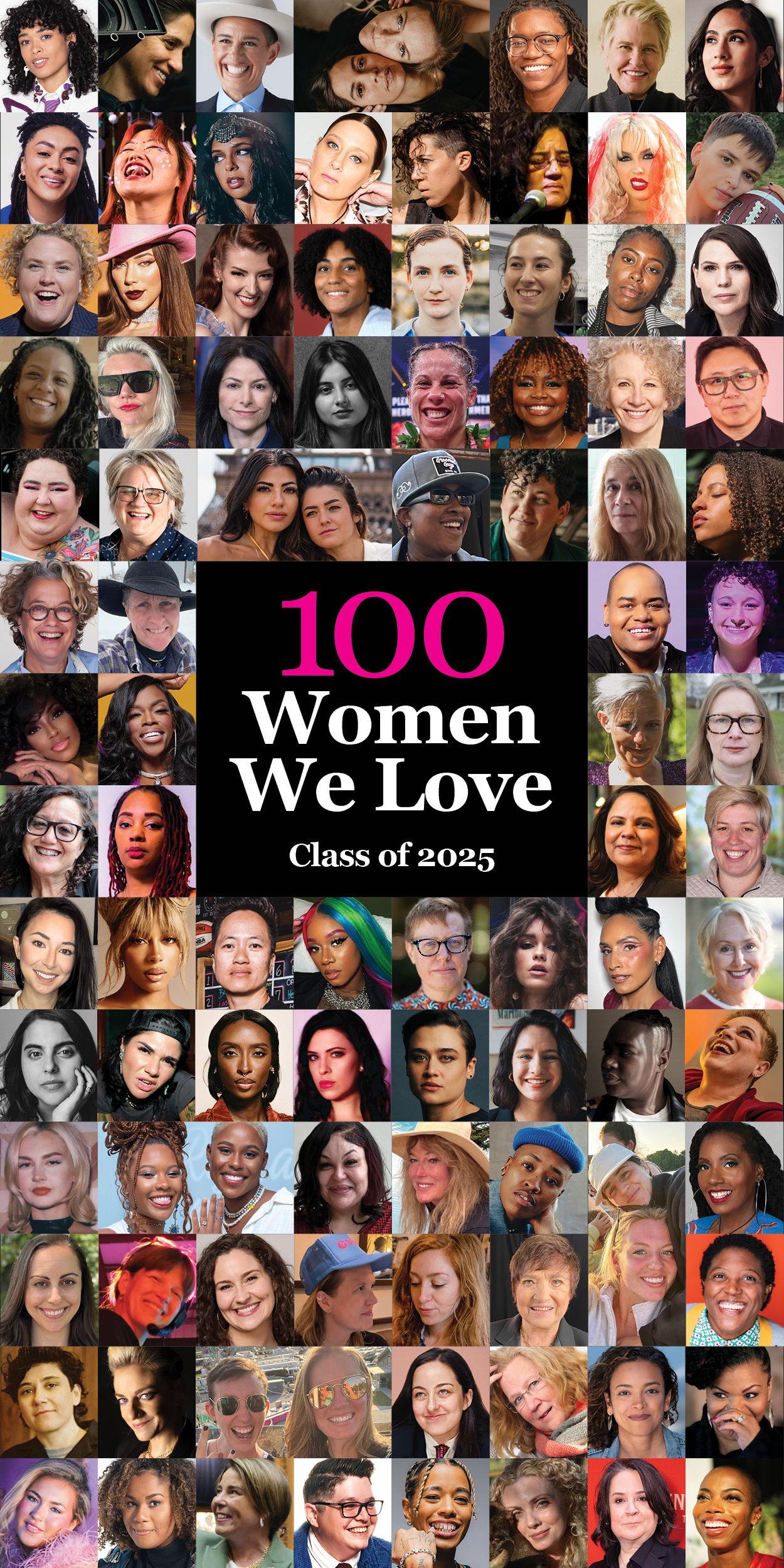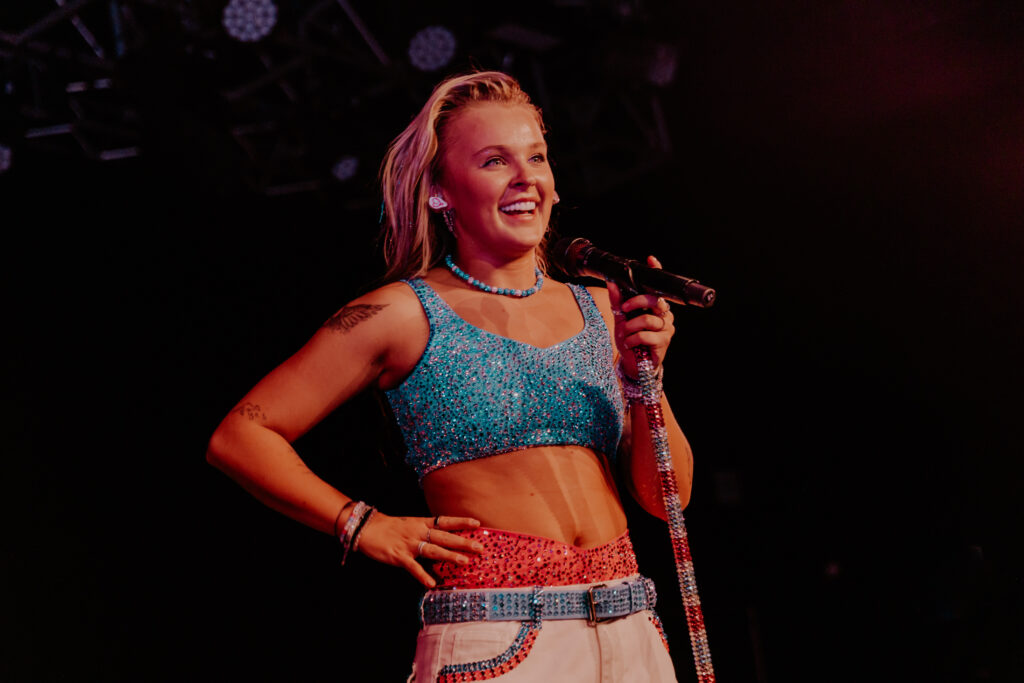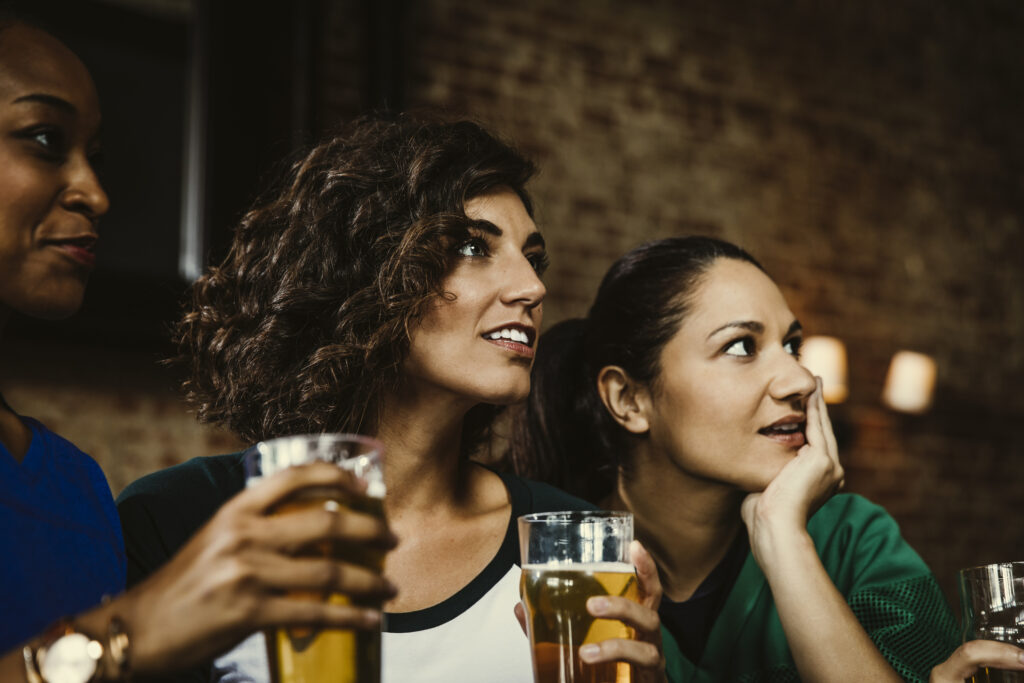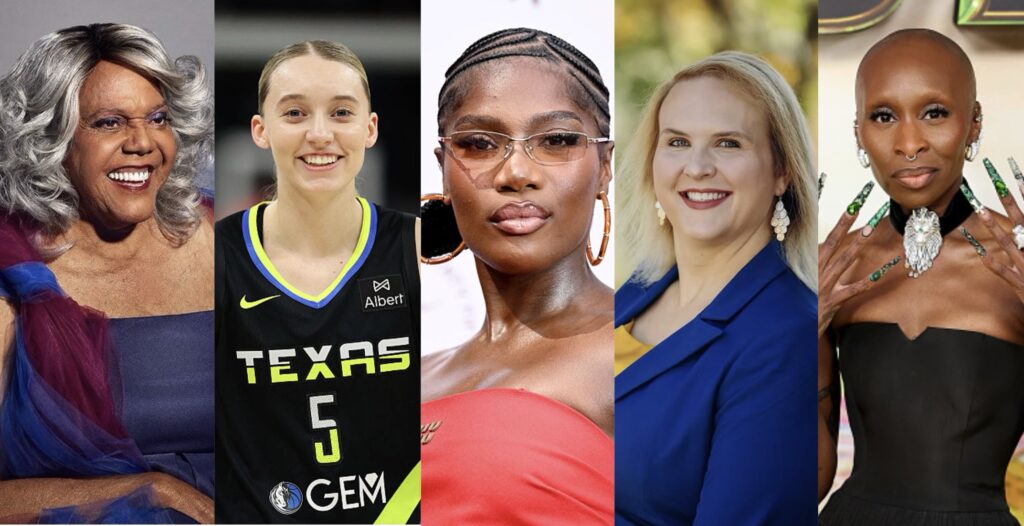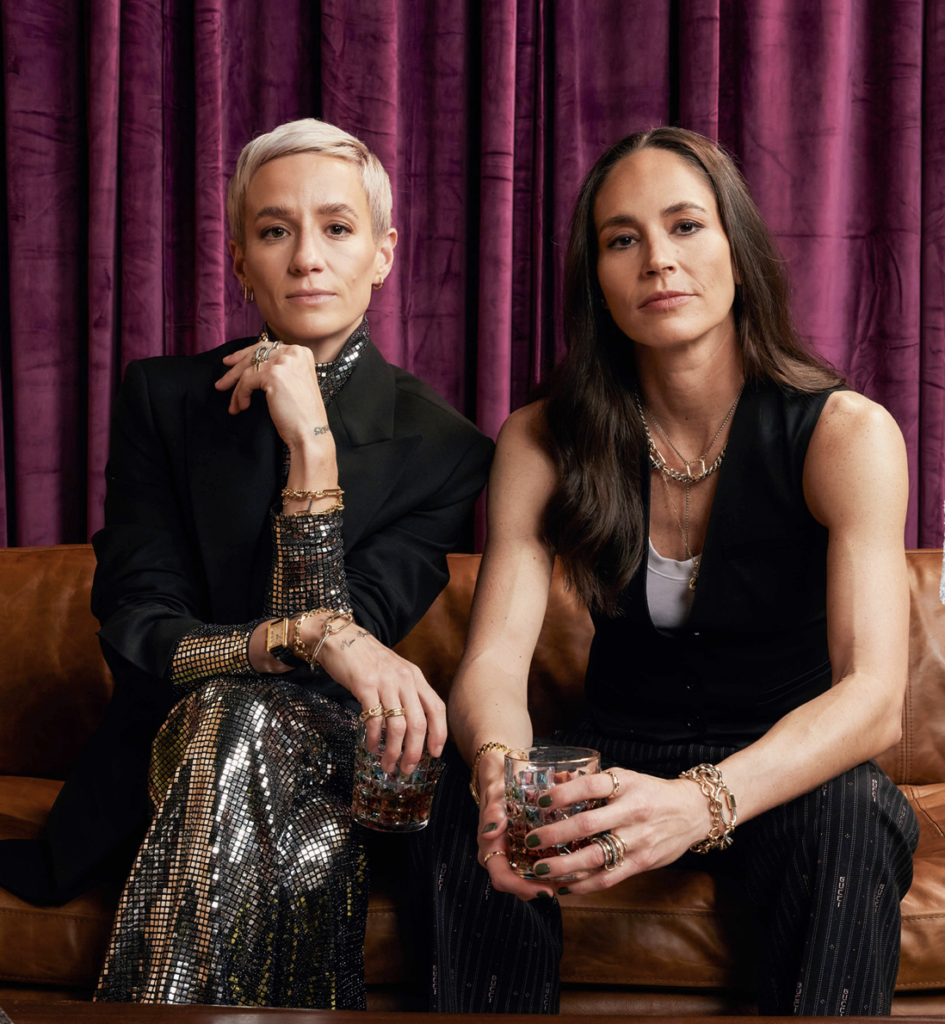Gimme Sugar

Logo’s newest true-life show brings us five lesbians out in the L.A. scene. Their authentic friendships restore credibility to the word “reality” on the small screen.
In the circus that is reality TV, lesbians have witnessed the antics of MTV’s emotionally unstable bisexuals on The Real World; a smattering of gay and bi girls on America’s Next Top Model; more than a few sizzling chefs on Bravo’s Top Chef; the surprisingly sane Dani Campbell vying with the savages for affection on A Shot at Love with Tila Tequila; and the sun-drenched if sometimes awkwardly matched surfer chicks on Curl Girls.
Time to get real. Logo’s newest, winning foray into reality TV, Gimme Sugar, is one of the first shows focusing on young lesbians in the midst of their unscripted lives. The premise: Five club-goers—friends before they ever knew their relationships would be examined by cameras—try to begin their own Saturday night party in Los Angeles called Sugar. The plot feels especially authentic because its creator, executive co-producer Michelle Agnew, knows it intimately: She has produced club and bar events for lesbians in L.A. for nearly a decade.
“I’ve been fascinated by this generation of lesbians,” she says. “The culture has changed, especially for young girls under 30. Watching all the reality shows come out, I thought, ‘This is a group of girls that needs to be spotlighted.’”
Agnew brought her idea to friend Michaline Babich, an executive producer and veteran of countless reality TV shows on Bravo, TLC and Discovery Channel. Together, the pair pitched a show to Logo about the hopping, diverse lives of today’s young L.A. lesbians, all of whom came of age during The L Word era. In planning Gimme Sugar, they gathered a group of scenester lesbians at a Mexican restaurant, placed questions in a hat and had them answer. Then they screen-tested a group that Charlene, the show’s narrator, culled for Babich and Agnew from her her own posse of friends. The ladies enlisted the expertise and wisdom of Scott Stone, of Stone & Co, producers of The Mole and Curl Girls, to pitch the show to Logo. “Scott was an amazing champion of this show. He totally got the concept and was invaluable in helping us prep Gimme Sugar for broadcast.”
For Agnew, it was essential that viewers see the truth of lesbian friends in the club scene. “I know some people pooh-pooh [the scene] and think it’s all about drinking and whatnot,” Angew says, “but there’s no other place that gay girls can go and know that everyone they see is a [dating] option or is like them.”
Charlene discovered her own lesbian status through Agnew and her producing partner Linda Fusco’s FUSEevents a few years ago, after emerging from an “I love everyone” phase, as she calls it. Of Agnew’s parties, she says, “I had such an amazing time, I would blast an email to all of my friends whether they were gay, straight, whatever. I would not have come out if I didn’t go.”
Now Charlene is Agnew’s protégé and watches the charmingly naïve efforts of her friends trying to start an event night of their own. Viewers—many of whom have probably fantasized about starting a club night themselves—will see the real sweat, dance and tears that go into actually putting one’s ass to the proverbial grind of event planning.
“I think [viewers] should watch very, very closely,” laughs Agnew, “and take it as a lesson.”
Whatever the characters do, they do together. “We wanted to tell a story about friendship,” Babich says. “There’s always the expectation when you do TV shows that you’re gonna supply the drama. I sat down with the girls beforehand and said, ‘Listen, however you think you’re supposed to act, you’re not supposed to act.’” (It may be one of the only reality shows in TV history where the executive producers warned the characters not to get too drunk.)
As a result, the dynamic final group felt few reservations about sharing their lives with millions of viewers; their gaffes, triumphs and conflicts alike are shown regardless of the consequence.
Take this moment off-screen, during our phone interview with the cast. Bathilda, the show’s hyper-feminine party girl, says she hopes Gimme Sugar will help shy, rural lesbians come out. “Maybe some Midwestern girl in the middle of nowhere, say Kentucky or something, or Milwaukee…” She pauses and consults the group. “Is Milwaukee a state?” Everyone cracks up; she laughs along with them.
Alex, a bisexual 21-year-old, says that her parents, both entertainment industry veterans, were upset to learn of her participation in reality TV. “I want to go into the entertainment industry, and they know how hard it is for people who are either gay or bi to be open and still be successful. I decided I was gonna take a risk and do it.”
Robin, 23, works as a casting director. “It was really interesting for me,” she says, “because with shows I’ve worked on before, everything is set up with a certain structure, whereas this one happens organically.” She adds, “I really did it thinking of that one girl sitting in the sticks in Georgia with few representations of lesbians on TV.”
Gimme Sugar will indeed offer representational perks to viewers in all states with some of the most compelling lesbian diversity ever shown on the small screen. In the first episode, there is a solidly built butch wearing baggy jeans, and a hot, angular Asian lesbian sitting next to Robin. With the hundreds of lesbians of all shapes and sizes present that night at the L.A. party Truck Stop, it’s a near guarantee that you will find a replica of one of you or one of your pals. It’ll be like “Where’s Waldo?”—only hotter and without the stripes.
Most happily, perhaps, is the strong presence of Asian lesbians on the show. Three lesbians on Gimme Sugar are certifiably Asian American. There is swaggering, deep Davonee from Laos; on-top-of-the-bar-making-out-with-whoever Taiwanese Bathilda; and alternately kickass and nurturing lesbian leader Charlene, who was born in the Philippines and settled in California as an infant. They are some of the first Asian lesbians portrayed on television.
Charlene, for one, sees her presence as a hopeful one. “To see all of us and see how different we are—I think it’s gonna open up a door to so many lesbians that are out there, and so many cultures out there where it’s wrong to be gay.”
Davonee came out to her family at age thirteen. “I was born left-handed,” she says, “so my grandma used to always hit me because she thought that was evil. So being gay was like, ‘Oh, shit, I’m gay and I’m left-handed!’ It’s really hard because we’re Asian, you know—we’re not supposed to be gay! So I think [the show] is just gonna help a lot of Asian families and girls to come out and be comfortable.”
Bathilda’s mother lives in Taiwan. “My mom doesn’t really know what’s going on in my life,” she says. “I told her the other day about my girlfriend, and she said, ‘You know I don’t like that,’ and I said, ‘Well, it’s important, I want you to meet her.’” Bathilda also thinks The L Word should include an Asian character. “I’ll make a cameo!” she says, laughing. “And we’re three very different lesbians—some Asian out there in Milwaukee can totally relate!”
Davonee breaks in coolly, “Yo, now what she means is, Bathilda’s like the whitest Asian you’ll ever know. I am probably like the blackest Asian. Charlene’s like a mixture of everything. She’s like a rainbow Asian.” The entire group dissolves into laughter, which is how most of their conversations end, both on and offscreen.
There is another form of diversity on the show that may disappoint some: specifically, Alex’s heterosexual making out. The first major date and bedroom make-out scene of Gimme Sugar happens between Alex and a dude. Viewers may groan, remembering Jenny in The L Word. What impulse grips cable producers to offer up steamy heterosexual make-out sessions in lesbian shows?
Agnew’s response is that Alex’s personal arc in the second episode was simply chronological and true to form. Gimme Sugar is, after all, a reality show, and its authenticity requires it to film the truth, not an idealized (aka totally gay) version of it.
“Alex is bisexual,” Agnew says. “It’s a reality. If I could have orchestrated it and been like, ‘Alex, I can’t have the second episode be about you going out on a date with a guy. Can you switch it up and go out with a guy later?’ I would have, but it happened. Still, it’s definitely not the focus of who Alex is. It’s a piece.”
“We asked a lot of these girls in terms of being authentic,” Babich adds, “so it’s only fair to be authentic right back, and not try to censor who they are.”
Alex herself wonders: If some women are harassed for being lesbians, why is she harassed by lesbians for being bisexual?
“Bisexuals have been portrayed [on TV] as that drunk girl that gets wasted and makes out with other girls for show,” Alex says. “It’s definitely not the case for me. I used to feel like I had to make a decision, and I just realized I don’t. That was the main reason I chose to do the show; because I know there’s a lot of girls who feel the same way.”
Despite the depth and diversity of the characters, there may remain some naysayers who spurn yet another cable reality show. On the surface, most of the episodes consist of young lesbians living in a seemingly perpetual weekend in slick L.A. clubs. The show’s jump-cut transitions are colored by loud rock and pop soundtracks and bar top go-go dancers, and the narration sounds like it’s straight from cue cards, a la MTV’s Made, as if in strict adherence to some Bible for Making a Reality TV Show.
The most compelling instances come in the girls’ unguarded moments that break our expectations. Like when Davonee is the first person in the show to cry, subverting the player-hater stereotype, or when the group argues around a picnic table, eventually coming to a truce with a barbed joke. It’s good fun, and true fun.
“I felt like so many representations of lesbians on TV are oversimplified and generic,” Agnew says. “Those portayals simply don’t match up to my experience with these bright, textured and free-spirited girls. They’re just loose and laughing about themselves and navigating through their lives. These girls were very honest, very candid with each other and they shared what a lot of people don’t see.”
What viewers end up seeing are familiar, tender expressions of friendship, ones that no one could have manufactured. It’s what keeps Gimme Sugar sweet.



